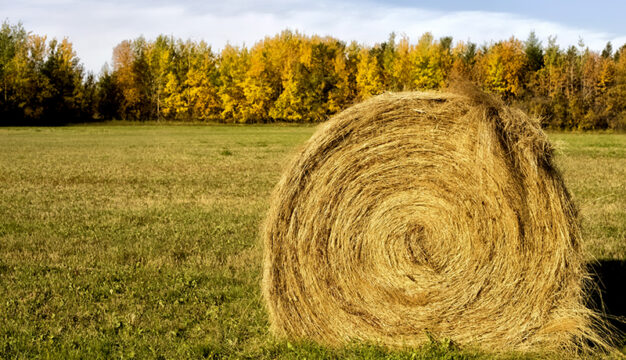Lake Sturgeon
The lake sturgeon (Acipenser fulvescens) is a large bottom-feeding fish notable for the bony plates on its back and sides. It is found throughout the Mississippi River drainage system, with Alabama being the southern limit of the lake sturgeon's historical range. At one time, it was abundant in the Tennessee and Coosa river systems. These southern populations may have been relics of southward displacement during the last Ice Age, which ended approximately 11,000 years ago. The species gained significant commercial value in the early 1900s and was eliminated from Alabama waters by overfishing. In 2000, a coalition of state and federal agencies began reintroduction efforts by annually stocking hatchery-reared juvenile lake sturgeon in Tennessee and Georgia river systems, and some of those stocked fish have dispersed into Weiss Lake in Cherokee County. As a result, the Alabama Natural Heritage Program has upgraded the status of this species in the state from extinct to critically imperiled.
 Lake Sturgeon
Sturgeons are one of the most ancient lineages of fish, dating to 350 million years ago. In North America, the order Acipenseriformes is represented by seven species of sturgeon and the American paddlefish (Polyodon spathula). Alabama is home to the paddlefish and four of those sturgeons; the lake sturgeon, gulf sturgeon (Acipenser oxyrinchus desotoi), Alabama sturgeon (Scaphirhynchus suttkusi), and historically the shovelnose sturgeon (Scaphirhynchus platorynchus). The lake sturgeon was first described in 1817 by Constantine Samuel Rafinesque, who gave it the genus name Acipenser, meaning "sturgeon," and the species name fulvescens for its fulvous, or yellowish, color. The word "sturgeon" itself is also an ancient term with unclear origins, although it is likely derived from the early Germanic terms for "disturb" or "scatter." The sturgeons are often described as "primitive" because their structure has remained relatively unchanged for millennia. This group of fish has several unique physical characteristics, including a mostly cartilaginous skeleton, vertebrae extending into the upper lobe of the caudal fin (tail fin), an elongated snout filled with sensory pits, and rows of large bony plates instead of scales.
Lake Sturgeon
Sturgeons are one of the most ancient lineages of fish, dating to 350 million years ago. In North America, the order Acipenseriformes is represented by seven species of sturgeon and the American paddlefish (Polyodon spathula). Alabama is home to the paddlefish and four of those sturgeons; the lake sturgeon, gulf sturgeon (Acipenser oxyrinchus desotoi), Alabama sturgeon (Scaphirhynchus suttkusi), and historically the shovelnose sturgeon (Scaphirhynchus platorynchus). The lake sturgeon was first described in 1817 by Constantine Samuel Rafinesque, who gave it the genus name Acipenser, meaning "sturgeon," and the species name fulvescens for its fulvous, or yellowish, color. The word "sturgeon" itself is also an ancient term with unclear origins, although it is likely derived from the early Germanic terms for "disturb" or "scatter." The sturgeons are often described as "primitive" because their structure has remained relatively unchanged for millennia. This group of fish has several unique physical characteristics, including a mostly cartilaginous skeleton, vertebrae extending into the upper lobe of the caudal fin (tail fin), an elongated snout filled with sensory pits, and rows of large bony plates instead of scales.
Lake sturgeon are slow-growing and long-lived, with a maximum age of more than 150 years, a length of 8 feet (~2.4 meters), and a weight exceeding 300 pounds (~136 kilograms). They generally do not reach sexual maturity until they are 15-20 years old, and after that individual females only spawn every three to five years. Offspring survival is generally less than 10 percent. These traits make the species very slow to recover from population declines. Adult lake sturgeon spend most of the year in slower-moving lower reaches of major rivers and migrate upstream in the spring to spawn. Historically, adults inhabited the Tennessee River near Decatur, Morgan County, and the Coosa River in Shelby, St. Clair, and Talladega Counties. Spawning takes place in rapids with fast-moving shallow water over a rocky bottom. In Alabama, Tennessee, and Georgia many historic spawning sites have been flooded by dams. Lake sturgeon are very poor at passing upstream through dams, so remaining spawning areas are unreachable by most adults. In the Tennessee and Coosa Rivers, stocked fish that remain above the first dam to adulthood can use natural rapids for spawning, but fish that dispersed below dams will be unable to reach those sites. Downstream adults are expected to use dam outflow, provided discharge from those dams is managed to maintain suitable habitat.
 Juvenile Lake Sturgeon
Each female lays an average of 50,000 to 700,000 eggs that are then fertilized by multiple males. The eggs adhere to the rocky bottom and hatch four to eight days later. Newly hatched lake sturgeon feed from an attached yolk sac for the first 10 days. Once the yolk sac is depleted, the larval sturgeon begin their "drift," a period during which they feed on zooplankton while floating downstream at night and seeking refuge at the river bottom by day. This drift period can last 40 days and cover approximately 30 miles (45 kilometers) of river. Eggs and young sturgeon are vulnerable to predation by fish and crustaceans, but by the time they reach the end of the drift they will have grown larger and are protected by thorny plates. Juvenile sturgeon inhabit slow-moving water with muddy bottoms where they feed on a variety of invertebrates.
Juvenile Lake Sturgeon
Each female lays an average of 50,000 to 700,000 eggs that are then fertilized by multiple males. The eggs adhere to the rocky bottom and hatch four to eight days later. Newly hatched lake sturgeon feed from an attached yolk sac for the first 10 days. Once the yolk sac is depleted, the larval sturgeon begin their "drift," a period during which they feed on zooplankton while floating downstream at night and seeking refuge at the river bottom by day. This drift period can last 40 days and cover approximately 30 miles (45 kilometers) of river. Eggs and young sturgeon are vulnerable to predation by fish and crustaceans, but by the time they reach the end of the drift they will have grown larger and are protected by thorny plates. Juvenile sturgeon inhabit slow-moving water with muddy bottoms where they feed on a variety of invertebrates.
Adult lake sturgeon feed on larger invertebrates such as snails and crayfish and can be a significant predator of small fish. The adults are not vulnerable to predation given their large size, but they are an important host to a number of parasitic species. Notably, lake sturgeon are the only host for the parasitic larvae of hickorynut mussels (Obovaria olivaria), which were eradicated from the Alabama portion of their range in the twentieth century along with the lake sturgeon. Reintroduced sturgeon that grow to adulthood in Alabama, Tennessee, and Georgia prefer to live in the deep lake-like habitat of reservoirs for much of the year. But they are sensitive to high temperatures in summer and move upstream to cooler water.
 Lake Sturgeon with Mouth Extended
Lake sturgeon were once so abundant they were considered a nuisance by commercial fishermen and were tossed ashore to rot or used as fertilizer. In the 1860s, however, their commercial value for meat and caviar was realized and the species was heavily targeted. Forty years later most populations had collapsed. Commercial fishing caused the decline of the lake sturgeon, and dam building prevented its recovery. Many dams were built during the twentieth century, and they isolated remaining sturgeon populations from traditional spawning sites. More recently, the species has begun to make a slow recovery as harvest throughout its range is now highly regulated or, as is the case in Alabama, prohibited. Recovery efforts have improved habitat and dam passages and reintroduction into formerly occupied areas, including Alabama, have expanded the species' range and established new populations.
Lake Sturgeon with Mouth Extended
Lake sturgeon were once so abundant they were considered a nuisance by commercial fishermen and were tossed ashore to rot or used as fertilizer. In the 1860s, however, their commercial value for meat and caviar was realized and the species was heavily targeted. Forty years later most populations had collapsed. Commercial fishing caused the decline of the lake sturgeon, and dam building prevented its recovery. Many dams were built during the twentieth century, and they isolated remaining sturgeon populations from traditional spawning sites. More recently, the species has begun to make a slow recovery as harvest throughout its range is now highly regulated or, as is the case in Alabama, prohibited. Recovery efforts have improved habitat and dam passages and reintroduction into formerly occupied areas, including Alabama, have expanded the species' range and established new populations.
Lake sturgeon remain an economically important sportfish in some northern states and reintroduced populations in southern states are managed with that goal in mind. The multi-agency restoration effort brings larval lake sturgeon from Wisconsin each year to grow at fish hatcheries across the southeast. When the young fish reach a size where post-stocking predation will be minimal, which for lake sturgeon is at least six inches, they are transported to several sites in Tennessee and Georgia for release. Wild spawning of reintroduced fish has not been observed yet, but the earliest stocked females would only just be reaching sexual maturity. If reintroduction efforts are successful, these populations are expected to support limited recreational harvest and provide economic and cultural value to Alabama's river towns.
Further Reading
- Becker, George C. Fishes of Wisconsin. Madison: University of Wisconsin Press, 1983.
- Bezold, Justin, and Douglas L. Peterson. "Assessment of Lake Sturgeon Reintroduction in the Coosa River System, Georgia–Alabama." American Fisheries Society Symposium 62. Bethesda, Md.: American Fisheries Society, 2008.
- Etnier, David A., and Wayne C. Starnes. Fishes of Tennessee. Knoxville: University of Tennessee Press, 1993.
- Ganus, J. E., D. M. Mullen, B. T. Miller, and V. A. Cobb. "Quantification of Emigration and Habitat Use Inform Stocking Rates of Lake Sturgeon (Acipenser fulvescens, Rafinesque, 1817) in the Cuberland River, Tennessee, USA." Journal of Applied Ichthyology 34 (Spring 2017): 331-340.
- Peterson, Douglas L., Paul Vecsei, and Cecil A. Jennings. "Ecology and Biology of the Lake Sturgeon: A Synthesis of Current Knowledge of a Threatened North American Acipenseridae." Reviews in Fish Biology and Fisheries 17 (February 2007): 59-76.



